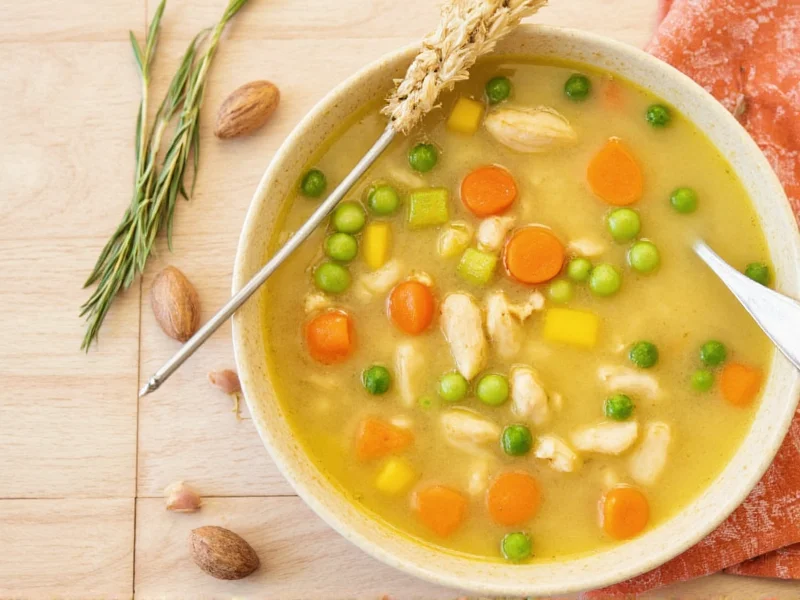When considering the best time for chicken soup, most cultures have historically turned to this nourishing dish during colder months. The steamy broth, tender vegetables, and protein-rich chicken create a comforting meal that warms the body and soothes the soul when temperatures drop. However, with thoughtful ingredient adjustments, chicken soup can provide nourishment and enjoyment in every season.
The Traditional Winter Connection
Chicken soup's reputation as a wintertime comfort food spans cultures worldwide. During colder months, the hot broth raises body temperature while the steam helps clear nasal passages—a natural remedy when cold and flu season strikes. The traditional Jewish "penicillin" concept reflects this universal understanding of chicken soup's therapeutic properties during winter illness.
Research supports what generations have known: the steam from hot chicken soup can improve nasal airflow by up to 22% compared to other hot liquids. The combination of nutrients from vegetables, protein from chicken, and hydration from broth creates an ideal immune-supporting meal during cold season.
Adapting Chicken Soup for Spring
As temperatures rise in spring, chicken soup can transition from heavy comfort food to a lighter seasonal dish. The key is incorporating fresh spring vegetables that complement the broth without overwhelming it:
| Spring Ingredient | When to Add | Flavor Contribution |
|---|---|---|
| Asparagus | Last 5 minutes | Earthy, slightly grassy |
| Peas | Last 3 minutes | Sweet, fresh |
| Spring onions | With 10 minutes remaining | Mild onion flavor |
| Fava beans | Last 7 minutes | Nutty, buttery |
Using a lighter broth base—perhaps made with chicken wings rather than thighs—creates a more delicate spring version. Adding fresh herbs like chives, dill, or tarragon in the final minutes preserves their bright flavors. This spring chicken soup adaptation maintains nutritional benefits while feeling appropriate for milder weather.
Refreshing Chicken Soup for Summer
Even in summer's heat, chicken soup can find a place at the table with strategic modifications. The secret lies in temperature, ingredients, and presentation:
- Cold chicken soup variations like Spanish gazpacho's poultry cousin (sometimes called "chicken salmorejo") offer refreshing options
- Using white meat chicken instead of dark meat creates a lighter protein base
- Incorporating cooling ingredients like cucumber, mint, and lemon zest
- Serving at room temperature rather than piping hot
- Adding a splash of vinegar or citrus for brightness
A summer-friendly chicken broth might feature shredded chicken breast, thinly sliced cucumbers, fresh dill, and a squeeze of lime. The key is maintaining the essence of chicken soup while adjusting for seasonal palates. Many Mediterranean cultures serve room-temperature broths during warmer months, proving that chicken soup across seasons is both possible and delicious.
Year-Round Benefits and Considerations
The nutritional profile of chicken soup makes it valuable regardless of season. Packed with protein, vitamins from vegetables, and hydration from broth, it supports overall wellness throughout the year. The amino acid cysteine in chicken may help thin mucus during respiratory illnesses, while the electrolytes in broth support hydration.
When preparing seasonal chicken soup recipes, consider these universal tips:
- Always start with quality ingredients—homemade broth yields superior flavor
- Season in layers: add salt at multiple stages for balanced flavor
- Don't overcook vegetables to maintain texture and nutrients
- Skim fat from broth for a cleaner-tasting soup
- Allow soup to rest before serving for flavors to meld
Freezing portions of soup made during peak vegetable seasons preserves seasonal flavors for enjoyment later. A batch of spring vegetable chicken soup frozen in May can bring summer freshness to a January meal.
Conclusion: Embracing Chicken Soup Through the Seasons
While chicken soup's reputation as a winter wellness remedy is well-deserved, its versatility makes it suitable for year-round enjoyment. By understanding how to adjust ingredients, preparation methods, and serving temperatures, home cooks can enjoy this nourishing dish in every season. The key lies in respecting seasonal produce and adjusting expectations—chicken soup in summer should feel refreshing rather than heavy, while winter versions can embrace their comforting richness.
Is chicken soup only for cold weather?
No, chicken soup can be enjoyed year-round. While traditionally associated with colder months for its warming properties, lighter versions with seasonal vegetables and room-temperature serving make it suitable for spring and summer as well.
What vegetables work best in summer chicken soup?
Summer chicken soup benefits from light, refreshing vegetables like cucumber, zucchini, cherry tomatoes, and fresh herbs such as dill and mint. These ingredients maintain the essence of chicken soup while feeling appropriate for warmer weather.
Why is chicken soup considered good for colds?
Chicken soup provides multiple benefits during illness: the steam helps clear nasal passages, the warm liquid promotes hydration, and certain amino acids may help reduce inflammation. The combination of vegetables provides vitamins while the broth replenishes electrolytes.
How can I make chicken soup lighter for spring?
For spring chicken soup, use white meat chicken, a lighter broth base, and incorporate fresh seasonal vegetables like asparagus, peas, and spring onions. Add fresh herbs like chives or tarragon at the end, and consider reducing added fats for a more delicate flavor profile appropriate for milder weather.











 浙公网安备
33010002000092号
浙公网安备
33010002000092号 浙B2-20120091-4
浙B2-20120091-4